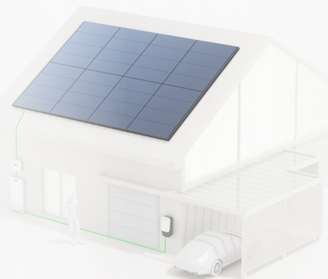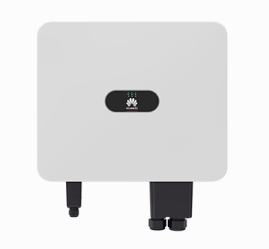Harnessing the sun's boundless energy, Solar Photovoltaic (PV) systems have emerged as a sustainable and eco-friendly solution to power our homes and businesses. These systems convert sunlight into electricity, relying on a nuanced interplay of components to capture, store, and distribute this clean energy efficiently. In this article, let's know some important components of the powerful solar PV systems and understand how they work

1. Solar Panels: The Harvesters of Sunlight
At the heart of any solar PV system are the solar panels. Composed of numerous photovoltaic cells, these panels convert sunlight into direct current (DC) electricity. The semiconductor material within the cells facilitates the generation of an electric current when exposed to sunlight, initiating the energy conversion process.
2. Inverters: Transforming DC to AC Power
While solar panels generate DC electricity, most household appliances operate on alternating current (AC). Inverters bridge this gap by converting the DC power from solar panels into AC power, making it compatible with standard home appliances and the electricity grid.
3. Mounting Structures: Ensuring Optimal Exposure
Solar panels need to be strategically positioned to receive maximum sunlight throughout the day. Mounting structures, such as racks or frames, provide the necessary support, ensuring the panels are oriented and tilted to capture sunlight effectively. Proper placement is crucial for optimizing energy production.
4. Battery Storage: Preserving Excess Energy
Solar PV systems often include battery storage to store excess energy generated during periods of abundant sunlight. These batteries, typically lead-acid or lithium-ion, store the surplus energy for later use, such as during nighttime or cloudy days, enhancing the system's reliability and autonomy.
5. Charge Controllers: Regulating Battery Charging
A great charge controller plays a vital role in preventing overcharging and excessive discharge of batteries. These devices regulate the flow of electricity from the solar panels to the batteries, ensuring the batteries receive an optimal charge and prolonging their lifespan.

6. Monitoring Systems: Real-Time Performance Insights
Monitoring systems provide users with real-time data on the performance of their solar PV systems. From energy production metrics to system health indicators, these monitoring tools empower users to track their system's efficiency and identify any potential issues promptly.
7. Wiring and Connectors: Channeling the Energy Flow
An intricate network of wiring and connectors forms the circulatory system of a solar PV system. These components facilitate the flow of electricity between the solar panels, inverters, batteries, and the electrical load. Quality wiring ensures minimal energy loss and safe operation.
8. Grid Connection: Integrating with the Utility Grid
Many solar pv systems are designed to be grid-connected. Grid-tied systems allow excess energy to be fed back into the utility grid, earning credits or compensation for the system owner. This integration enhances the overall efficiency of the system and contributes to the broader energy infrastructure.
9. Safety Disconnects: Emergency Shutdown
To ensure the safety of both users and maintenance personnel, solar PV systems incorporate safety disconnects. These switches allow for the quick shutdown of the system during emergencies or maintenance activities, minimizing the risk of electrical hazards.
Final Words
In conclusion, the seamless functionality of solar PV systems hinges on the synergy of these key components. From the solar panels capturing sunlight to the inverters transforming it into usable energy, each element plays a vital role in generating clean, renewable power. As solar technology advances and becomes more accessible, embracing these components not only reduces dependence on traditional energy sources but also propels us toward a sustainable and greener energy future.
